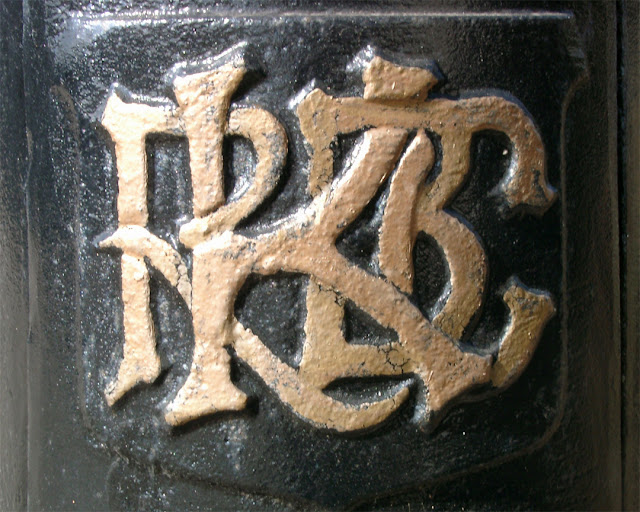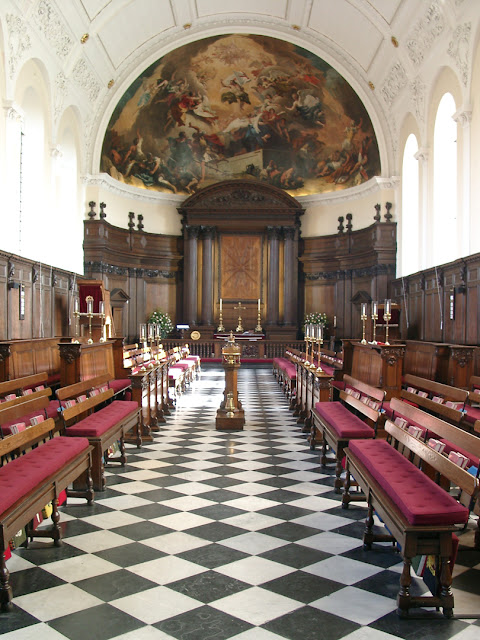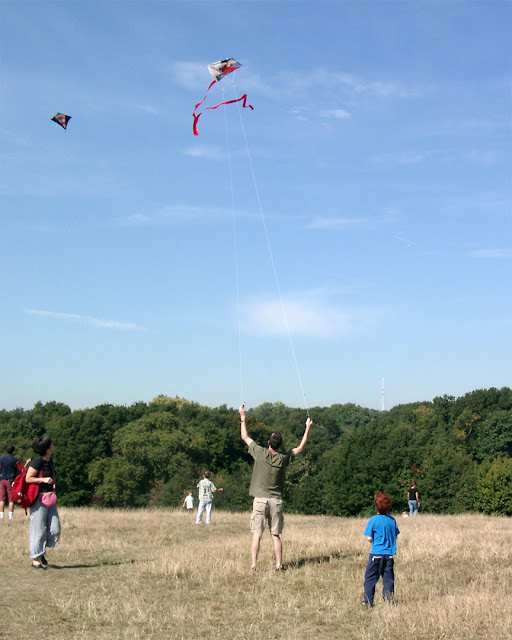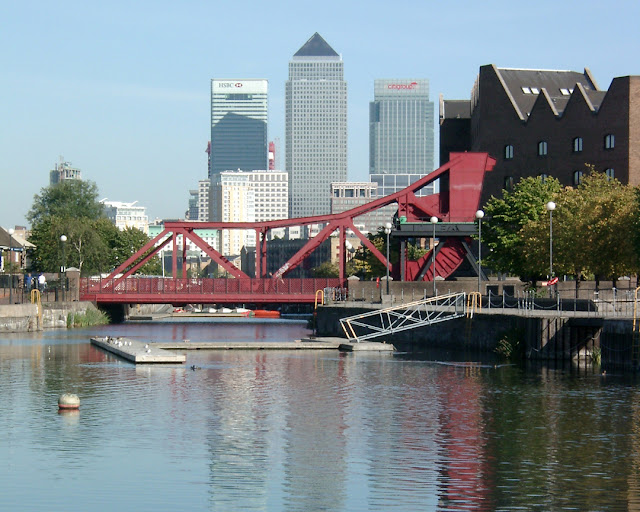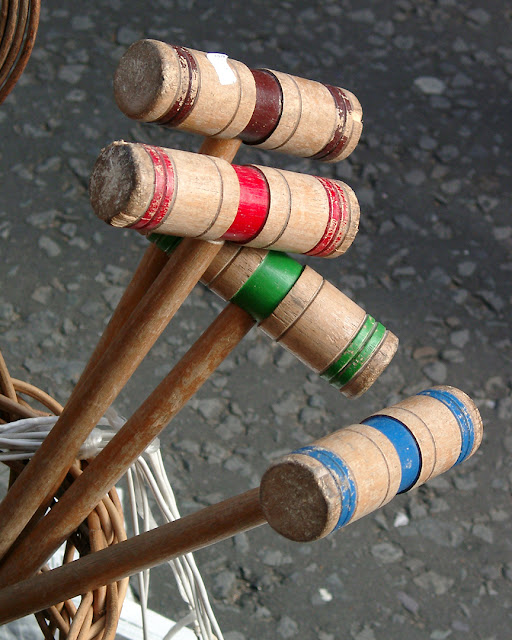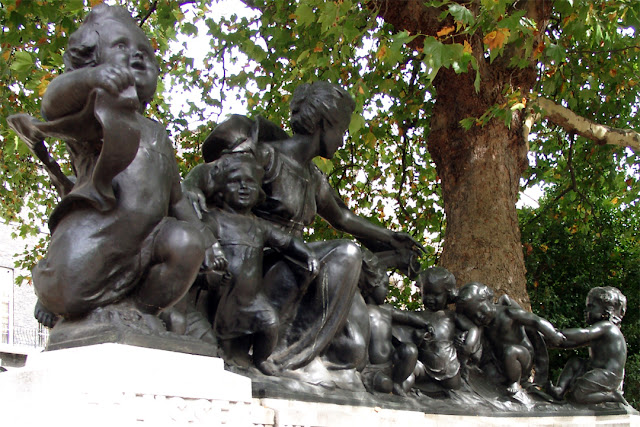Thursday, September 30, 2004
Albert Bridge from Battersea Park
Albert Bridge seen from Battersea Park
London, September 2003
“Albert Bridge is a road bridge over the Tideway of the River Thames connecting Chelsea in Central London on the north, left bank to Battersea on the south. Designed and built by Rowland Mason Ordish in 1873 as an Ordish–Lefeuvre system modified cable-stayed bridge, it proved to be structurally unsound, so between 1884 and 1887 Sir Joseph Bazalgette incorporated some of the design elements of a suspension bridge. In 1973 the Greater London Council added two concrete piers, which transformed the central span into a simple beam bridge. As a result, today the bridge is an unusual hybrid of three different design styles. It is an English Heritage Grade II* listed building.” (Albert Bridge, Wikipedia)
Wednesday, September 29, 2004
Tuesday, September 28, 2004
Chelsea Old Church
Chelsea Old Church
Old Church Street, Chelsea
London, September 2003
“Chelsea Old Church, also known as All Saints, is an Anglican church, on Old Church Street, Chelsea, London SW3, England, near Albert Bridge. It is the church for a parish in the Diocese of London, part of the Church of England. Inside the Grade I listed building, there is seating for 400 people. There is a memorial plaque to the author Henry James (1843–1916) who lived nearby on Cheyne Walk. To the west of the church is a small public garden containing a sculpture by Sir Jacob Epstein.” (Chelsea Old Church, Wikipedia)Nov 11,
Monday, September 27, 2004
Sunday, September 26, 2004
Saturday, September 25, 2004
The In-Pensioner
The In-Pensioner by Philip Jackson, 2000
Royal Hospital Chelsea
Royal Hospital Road, Chelsea
London, September 2003
Friday, September 24, 2004
Royal Hospital Chelsea Chapel
Royal Hospital Chelsea Chapel by Christopher Wren
Royal Hospital Road, Chelsea
London, September 2003
“The Hospital's chapel was designed by Sir Christopher Wren and is a fine and rare example of Wren's pure ecclesiastical work: it rises 42 feet (13 m) high and was completed in 1687. The chapel contains a fine painting of the Resurrection in the half dome of the apse, painted by Sebastiano Ricci and his nephew Marco (who assisted with the painting at the Royal Hospital) and dates from the end of Queen Anne's reign. The Chapel was consecrated in August 1691, and services were formerly held twice daily. Nowadays services are confined to Sunday mornings and special military occasions.” (Royal Hospital Chelsea, Wikipedia)
Thursday, September 23, 2004
Wednesday, September 22, 2004
Tuesday, September 21, 2004
Monday, September 20, 2004
Sunday, September 19, 2004
Saturday, September 18, 2004
Friday, September 17, 2004
Thursday, September 16, 2004
Wednesday, September 15, 2004
Tuesday, September 14, 2004
Newlands Quay
Newlands Quay
Shadwell Basin
Wapping
London, September 2003
“Newlands Quay in Wapping, London, is a group of dwellings that is Grade II listed by Historic England. It was built in 1986–88 adjacent to the Shadwell Basin and designed by the architecture firm of MacCormac Jamieson Prichard and Wright.” (Newlands Quay, Wikipedia)
Monday, September 13, 2004
Wapping Wall
An old bascule bridge (Canary Wharf in background)
Wapping Wall
Shadwell Basin, Wapping
London, September 2003
Sunday, September 12, 2004
Tobacco Dock
The east wall around Tobacco Dock
Wapping Lane
Wapping
London, September 2003
“Tobacco Dock is a Grade I listed warehouse located in the East London district of Wapping, and thereby the London Borough of Tower Hamlets. Part of the London Docks designed by Scottish civil engineer and architect John Rennie, the warehouse was completed in 1812 and primarily served as a store for imported tobacco, hence the name. During the early 20th century, economic activity in the area fluctuated due to World War I and World War II, and both London Docks and nearby St Katharine Docks had closed by 1969. After the London Docklands ceased seaborne trade, the warehouse and surrounding areas fell into dereliction until it was turned into a shopping centre which opened in 1989. However, due to the early 1990s recession, it was forced to close two years later. In 2003 English Heritage placed it on its "at risk" register, preventing many developers from attempting a rejuvenation of the former London Docklands site. For two decades Tobacco Dock stood largely empty; it was used as a barracks for military personnel providing security to the 2012 London Olympics.” (Tobacco Dock, Wikipedia)
Saturday, September 11, 2004
Captain Kidd
Captain Kidd pub
Wapping High Street
Wapping
London, September 2003
“The Captain Kidd is a pub in Wapping, East London that is named after the seventeenth century pirate William Kidd, who was executed at the nearby Execution Dock. The pub is a Grade II listed building, and was historically used as a coffee warehouse. The Captain Kidd pub is situated at 108 Wapping High Street, next door to the Marine Police Force headquarters. The building originates in the 19th century as a three-storey brick house, and was remodelled in the Edwardian era. To the rear of the building, there is a former workshop that goes out to a wharf. The building, along with 110 Wapping High Street, are now Grade II listed. In the 1980s, the building became a pub, having previously been a coffee warehouse. It was named after the seventeenth century pirate William Kidd, who was executed at the nearby Execution Dock in 1701. The pub has a nautical theme and retells the story of Captain Kidd and his execution; the layout of the pub is designed to be similar to a ship's hulk. It is a Sam Smith's pub, and is situated on Wapping High Street. The entrance has a large archway, and the pub has three floors, and has a terrace overlooking the River Thames.” (Captain Kidd, Wikipedia)
Friday, September 10, 2004
Lightship Ten
Lightship Ten restaurant
St Katharine Docks
Tower Hamlets
London, September 2003
“I will admit I am not usually a fan of concept restaurants, the attempt to squeeze a 'dining experience' into a setting that is ill-suited to it. But in the case of Lightship Ten, I am more than willing to make an exception. It is exactly what its name suggests: an antique lightship, built in Copenhagen in 1877, which saw service in the chill waters around Denmark at places such as Gedser Reef and Aalborg Bay. In 1943, it was seized by the Germans who positioned it just south of Anholt Knob (stop sniggering back there in the cheap seats) where it was the victim of unsuccessful British air raids. It remained in service until 1972. It has now been bought up and turned into a rather fine restaurant which is moored alongside the sleekly phallic yachts at St Katherine's Dock next to Tower Bridge. Presumably this means that if business doesn't work out here they can lift anchor, or whatever it is lightships do, and sale off to somewhere else.” (Lightship Ten, The Guardian)
Thursday, September 9, 2004
Wednesday, September 8, 2004
Tuesday, September 7, 2004
Monday, September 6, 2004
Sunday, September 5, 2004
Saturday, September 4, 2004
Margaret MacDonald Memorial
Margaret MacDonald Memorial by Richard Reginald Goulden, 1914
Lincoln's Inn Fields
London, September 2003
“The Margaret MacDonald Memorial is a sculpture by Richard Reginald Goulden, beside the path at the north edge of the public park at Lincoln's Inn Fields, London. It became a grade II listed structure in 1974. Margaret Ethel MacDonald (1870–1911) was a British feminist and social reformer, and the wife of the Labour politician Ramsay MacDonald. The couple lived at 3 Lincoln's Inn Fields, and had six children. She died from blood poisoning in 1911, many years before he became the Labour Party's first prime minister in 1929.” (Margaret MacDonald Memorial, Wikipedia)
Friday, September 3, 2004
Sir John Soane's Museum
Sir John Soane's Museum
Lincoln's Inn Fields
London, September 2003
“Sir John Soane's Museum is a house museum, located next to Lincoln's Inn Fields in Holborn, London, which was formerly the home of neo-classical architect, John Soane. It holds many drawings and architectural models of Soane's projects, and a large collection of paintings, sculptures, drawings and antiquities that he acquired over many years. The museum was established during Soane's own lifetime by a Private Act of Parliament in 1833, which took effect on his death in 1837. Soane engaged in this lengthy parliamentary campaign in order to disinherit his son, whom he disliked intensely. The act stipulated that on Soane's death his house and collections would pass into the care of a Board of Trustees, acting on behalf of the nation, and that they would be preserved as nearly as possible exactly in the state they were at his death. The museum's trustees remained completely independent, relying only on Soane's original endowment, until 1947. Since then, the museum has received an annual Grant-in-Aid from the British Government via the Department for Digital, Culture, Media and Sport.” (Sir John Soane's Museum, Wikipedia)
Thursday, September 2, 2004
Wednesday, September 1, 2004
The Ark
The Ark by Ralph Erskine, 1992
Talgarth Road, Hammersmith
London, September 2003
“The Ark is an office building located in Hammersmith, London. The building lies immediately south of the Hammersmith Flyover. Named in reference to its hull-like profile, the Ark was designed by architect Ralph Erskine, for Swedish developers Ake Larson and Pronator. Erskine, based in Sweden, worked from a small office in collaboration with other trusted architects in order to retain design freedom. In the case of the Ark, Erskine and Vernon Gracie (who worked with Erskine on Byker Wall in Newcastle) collaborated with London architects Rock Townsend and latterly Lennart Bergstrom in Stockholm. Planning permission for the building was granted on 19 September 1989; building commenced the same day and the complex was completed in 1992. Owing to the difficult economic circumstances at the time, Ake Larson's UK division did not survive to occupy the building. Drinks company Seagram subsequently occupied the Ark from 1996 until it was bought by Vivendi Universal in 2000.” (The Ark, Wikipedia)
Subscribe to:
Posts (Atom)




